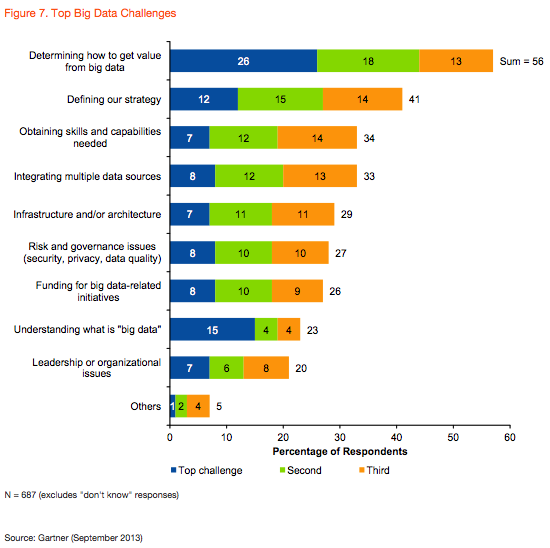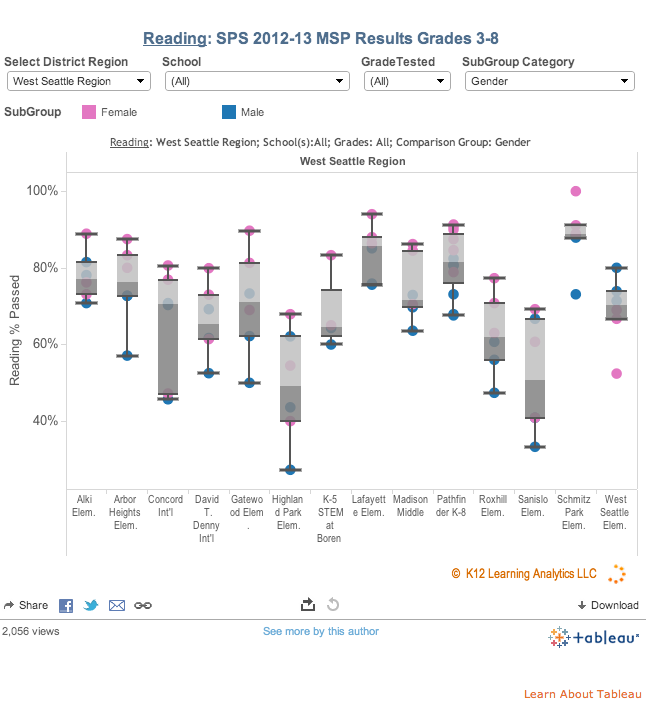Big data is a big buzzword these days. But in many ways it misses what’s more important than increasing amounts of data — increasing access to data.
In fact, one of the most profound shifts in the world of data in the last 10 years has been the seemingly radical idea that people ought to be able to work with their own data. Now store managers, doctors, and manufacturing managers can actually answer questions about their businesses. Shocking!
This isn’t how it used to be. You used to have to work with pre-programmed reports. These reports were time-consuming to change, usually involving some kind of a queue and the feeling that you were trapped.
Working with inflexible reports is the equivalent of hard-coding your business. Today we know that unless you can understand a new trend, a new dynamic, a new source of growth quickly, you won’t compete. And that’s the thing in this big data world; the issue is not about “having” data, but what we do with it.
Determining how to get value from big data is one of the largest challenges.
Editor’s note: Ellie Fields, author of this post and VP of Product Marketing at Tableau Software, will be joining Simon Zhang, Director of Business Analytics at LinkedIn at our upcoming DataBeat event, May 19-20 in San Francisco. They’ll be discussing tactics for fostering a ‘culture of data’ inside any organization. Grab your ticket now and save $200.
The sales department used to be the prototypical example of a place where data is generated in mounds and not democratized. But today, a successful company like LinkedIn can arm its sales force with interactive customer analytics. This lets salespeople have a richer conversation about how customers are using LinkedIn, and it also lets them target the customers with the highest potential. LinkedIn says it has increased its business-services revenue by 85 percent year over year in the process. Consider what would happen if data informed every decision your salespeople make: what accounts to focus on, who to call, and what offering is most attractive to that person? Bringing data to thousands of micro decisions has a tremendous cumulative effect.
Northshore School District
Educators are stereotypically known to be data-rich but analysis-poor. There are plenty of school data systems, from attendance and class assignments to grades and absences. But educators typically don’t have the resources to integrate data from different systems, never mind build dashboards for trying to understand trends. I’ve witnessed how an elementary school principal in the Northshore School District in Bothell, Wash., uses data to identify at-risk kids, change class assignments, and allocate resources more effectively. An educator using data to improve education? It’s the most natural thing in the world! And these days, it’s possible.
Dell
Even at established companies like Dell Computer in Austin, I’ve seen how analysts use visual, self-service analytics to understand the drivers of growth. At one point, the finance department saw some unusual growth. They drilled right down into the sales pipeline to understand what was going on. They were able to project out that growth. And they did it quickly, on their own, without the need to enter a development cycle or put in a change request. People from executives to analysts use data at Dell to create what they call “aha” moments.
These are just some examples of what is happening in a few sectors of the economy. We’re in the middle of an era of innovation in data and analytics — you can see it in the countless lists of startups tackling big data. And yes, this era is leveraging new technologies to deal with things like big data and unstructured data.
But the most profound effects of big data innovation are much simpler: making data easier to work with and faster. These new technologies aren’t just for “data scientists.” They are built for anyone who has data and wants to ask basic questions. They are built to democratize access to data. And the results have been profound.
This wave of innovation isn’t over. The impact generated by the democratization of data and big data will spur more action. Data continues to explode, and new trends like the Internet of Things will only fuel the change. But as anyone who has worked with data can attest, initial questions only spur further and more insightful ones. Insight is not something you generate through a five-step process. It’s a continuous cycle of insight and collaboration. Organizations that get data into their DNA see huge results and, often, happier employees – those that have been liberated from the endless report queue.
While some data is still too hard to work with and many people don’t have the tools, access, or skills they need, we are seeing people in the world of business, education, government, and more being able to answer questions as fast and as naturally as they think. Now that’s big.
Ellie Fields is the Vice President of Product Marketing at Tableau Software. Ellie joined Tableau in the early stages of the company in 2008 and is part of the core team that has fueled the growth and success of Tableau’s products. In particular, she launched and oversees the development and growth of Tableau Public which has served more than 200 million impressions. Tableau Public is a unique product, popular among journalists, developed for anyone that wants to easily publish interactive data on the web. Ellie also works on Tableau’s corporate product and helped launch its new cloud analytics product, Tableau Online. Prior to Tableau, Ellie worked in product management at Microsoft and as an associate in late-stage venture capital. Ellie hold B.S. and B.A. degrees in Engineering from Rice University and an MBA from the Stanford Graduate School of Business.
VentureBeat's mission is to be a digital town square for technical decision-makers to gain knowledge about transformative enterprise technology and transact. Learn More



